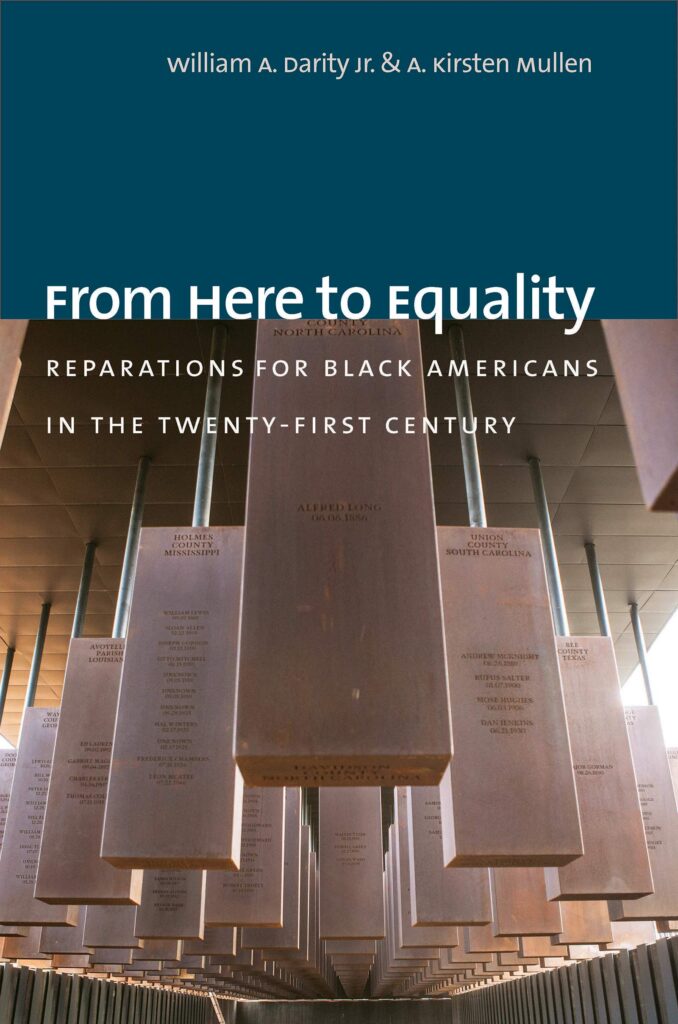
William A. Darity Jr. and A. Kirsten Mullen, From Here to Equality: Reparations for Black Americans in the Twenty-First Century. Chapel Hill: University of North Carolina Press, 2020.
This book is about reparations — and so much more. The authors Darity and Mullen explain how the 1800s were a time when Americans both perpetrated racial harm and gained from the harm, whether or not they inflicted it. The authors offer two criteria for those who would qualify for reparations: first, U.S. citizens would have to establish that they had at least one ancestor who was enslaved after the formation of the American republic. In addition,
they would have to prove that they self-identified as “black,” “Negro,” Afro-American,” or “African American” at least twelve years before the enactment of the reparations program or the establishment of a congressional or presidential commission “to study and develop reparations for African Americans”—whichever comes first.
Page 258
Historically, various attempts to redress grievances were made and included “40 acres and a mule”, a promise made to blacks during the Civil War but which the federal government failed to provide. Granting land, education, free housing, and paid employment were also considered as compensation to blacks. Unfortunately, most efforts were met by overt, white opposition. In the South, black schools and churches were burned. Moreover, President Andrew Johnson’s hostility toward blacks became a key factor of obstruction and sowed the seeds for the Jim Crow period that followed Reconstruction.
While the authors focus on past efforts to offer reparations, the text overwhelmingly details abuses to blacks during the Civil War and Reconstruction periods of American history. The authors include rarely described events such as those that took place in the North during the Civil War when anti-black riots occurred in New York City. The riots were caused by prominent white supremacist and anti-draft participants. At the same time, black troops increasingly became vital to the Union cause, and a total of 180,000 black men had served the Union army by the end of the war.
In a comparatively short chapter on how to make reparations work, the authors call upon the U.S. Congress to authorize payments from the U.S. Government. They cite H.R. 40, a resolution originally introduced in 1989 by the late Congressman John Conyers and now sponsored by Representative Sheila Jackson of Texas. House Resolution 40 is entitled “Legislation to Study and Develop Slavery Reparations Proposals.” The authors also describe various methods by economists to construct estimates (totaling in the trillions) to achieve an appropriate remedy. As a political strategy to advance reparations, the authors state that colleges and universities should sponsor a national effort to compensate for harms.
According to the authors, their book offers contrasting information about the black experience in America—one that counters a sanitized and inaccurate version of American history. In their narrative, Darity and Mullen make a comprehensive case for black reparations in America. Academic and scholarly, this notable book includes detailed notes and references that comprise about one third of the content. This well-documented work is a pivotal contribution to black history and the path “From here to Equality.”